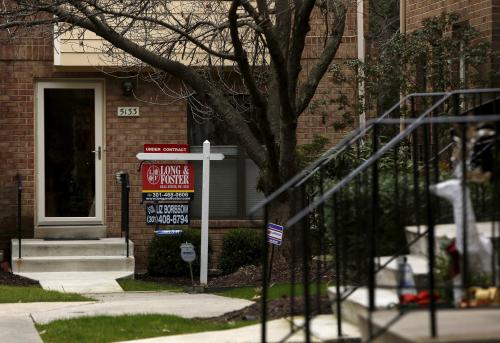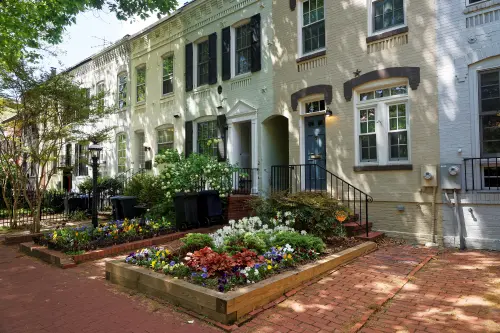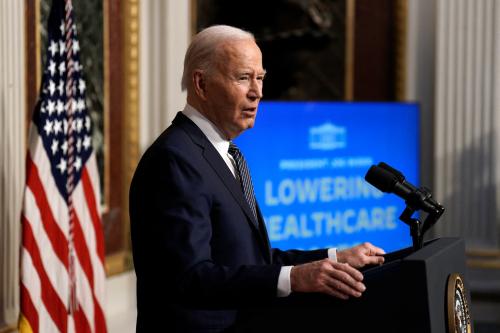It is a dark time for renters. Although U.S. housing markets have recovered from the Great Recession, rising rents are driving financial insecurity among low- and moderate-income families throughout the country. In California, a group of YIMBY activists led by state senator Scott Weiner is trying to establish apartment-friendly zones around transit stations, wrestling away control from the dreaded NIMBYs. In the trenches of the remote ice planet known as Minneapolis, Mayor Jacob Frey has made a daring raid on single-family neighborhoods, proposing that fourplexes be allowed by right. Meanwhile, in the nation’s capital, three Democratic Senators are vying to lead the Renter Alliance by offering even more ambitious federal assistance plans for cost-burdened renters.
The tensions between suburban homeowners, traditional affordable housing advocates, and the emerging YIMBY movement may not have reached epic proportions yet. But in this election year, policymakers are awakening to the force of renters’ concerns. This article describes the pros and cons of various approaches policymakers have proposed to assist renters, as the 2018 midterm elections approach.
Aim for the Death Star: Reform exclusionary zoning
Most renters, especially low- and moderate-income families, live in apartments. Yet local governments make it more difficult to build apartments than single-family homes. This is the heart of exclusionary zoning: limit new development to single-family homes with large yards, and poor people cannot afford to move into your community.
Several state and local governments are taking aim at apartment bans in order to expand renters’ access to high opportunity neighborhoods. The most ambitious attempt was California’s SB 827, sponsored by state senator Scott Wiener. The bill would have allowed apartment buildings up to four stories near transit stations across California. The bill faced opposition from traditional affordable housing advocates, who worried that most new development would occur in low-income and/or minority neighborhoods, leading to displacement of existing residents. The bill died in committee earlier this year, but observers expect similar bills to reappear.
Minneapolis Mayor Jacob Frey is seeking modest increases in density across a wide swath of neighborhoods. He has proposed allowing small apartment buildings—duplexes and three-to-four family buildings—in all single-family neighborhoods. Crucially, he argues these buildings should be allowed by right, meaning that city planners can grant approval to developers without seeking input from neighboring homeowners. Cities such as Portland, Ore., are considering greater flexibility for allowing accessory dwelling units (ADUs). ADUs are typically small apartments in the basement or above the garage of a single-family home. Allowing duplexes or ADUs would only slightly increase the density of single-family neighborhoods, while creating some additional—and more affordable—housing.
If your target is out of arms’ reach, offer a bounty
Unlike state and local governments, federal policymakers have no authority to directly change local land use. Instead, federal officials must use financial carrots and sticks to induce local governments to reform their zoning.
Unlike state and local governments, federal policymakers have no authority to directly change local land use. Instead, federal officials must use financial carrots and sticks to induce local governments to reform their zoning. Two proposals from U.S. Senators offer different visions of how to do that.
Sen. Elizabeth Warren’s (D-Mass.) American Housing and Economic Mobility Act is a comprehensive, nuanced, and thoughtfully designed package of housing policies. It offers carrots for zoning reform, along with expanding federal funds to build new housing. Sen. Warren’s bill would create a new federal block grant program that would competitively award funds for local infrastructure improvements, including school repairs or parks. Local governments could apply for the grants, conditional on communities reforming land use regulations. The bill cites establishing by-right development, removing apartment bans, and streamlining approval processes as examples of zoning reforms that would qualify for block grant receipt. Sen. Warren’s bill also attempts to increase housing supply by substantially boosting federal funding for developing low- and moderate-income housing in areas where housing costs have risen faster than incomes.
Sen. Cory Booker’s (D-N.J.) Housing, Opportunity, Mobility, and Equity Act uses a stick rather than a carrot to encourage zoning change. Under his proposal, the U.S. Department of Housing and Urban Development (HUD) would require local governments that currently receive funds from the Community Development Block Grant (CDBG) program to reduce barriers to affordable housing. Specific zoning features targeted for reform are similar to those in Sen. Warren’s bill. In addition to easing supply restrictions, Sen. Booker’s proposal includes a boost to housing demand: a federal tax credit for renters paying more than 30 percent of their income on rent (HUD’s standard measure of housing cost burden).
One other national housing bill addresses only the demand side of cost burdens. Sen. Kamala Harris’ (D-Calif.) Rent Relief Act offers federal tax credits to cost-burdened renters, similar to Sen. Booker’s bill, but does not discuss housing supply. In high-cost markets such as the San Francisco Bay Area, giving renters more money without reducing zoning constraints would likely lead to rent increases with the gains accruing to landlords.
Beware of insincere bounty hunters
For financial incentives to effectively change local zoning, the policies must meet two conditions. First, the incentives should be large enough to attract participation by the targeted localities: communities that would offer low- and moderate-income families substantially better opportunities often have the most exclusionary zoning. Wealthy suburbs like Westchester County, N.Y., and Mount Laurel, N.J., can’t be bribed with peanuts. Second, financial incentives need to require that local governments deliver better housing outcomes, not merely change their zoning on paper. Receipt of federal funding should be tied to increased production of lower-cost housing. Massachusetts, California, and New Jersey have decades-old laws requiring localities to produce their “fair share” of region-wide affordable housing, yet most affluent communities still fall far short of housing production goals. Exclusionary-at-heart localities have mastered evasive tactics, such as adopting “inclusionary zoning” policies—but building little or no affordable housing as a result.
Receipt of federal funding should be tied to increased production of lower-cost housing.
Rent control is a double-edged light saber
The zoning reforms described above tweak the market framework of supply and demand to produce more efficient and equitable outcomes. In contrast, some policy proposals call for more intrusive regulation of rental markets, particularly of landlord behavior.
A ballot initiative in California (Proposition 10) would allow local governments to expand rent control. Currently, rent control applies mostly to older apartment buildings. If Proposition 10 passes, cities could apply controls to newly constructed apartments. Candidates in Illinois, New York, and Washington state have also discussed empowering cities to use rent control. Tenants who win the proverbial lottery to occupy rent-controlled units benefit substantially from controls. But such policies encourage landlords to convert apartments to condominiums, thus reducing housing supply and driving up rents in uncontrolled buildings. Moreover, the prospect of new rent controls may deter future apartment development.
Candidates across the country are also discussing ways to protect tenants from eviction, reflecting the issue’s prominence in the wake of Matthew Desmond’s seminal book. San Francisco, New York City, and Philadelphia are among the cities considering expanding tenant protections. Such policies are generally unpopular with the real estate industry, and could create incentives for landlords to scrutinize prospective tenants more closely. Meanwhile, at the federal level HUD Secretary Ben Carson is sending conflicting messages about his administration’s enthusiasm for enforcing the Fair Housing Act, which prohibits landlords from discriminating against renters based on race, color, national origin, religion, sex, family status, or disability.
Ten years ago, the collapse of the U.S. housing market dominated policymakers’ speeches during the 2008 elections. As the midterm elections approach in 2018, the volume, range, and innovativeness of housing proposals suggests that renters are emerging as a more potent political force.








Commentary
‘The Renters Strike Back’
September 27, 2018